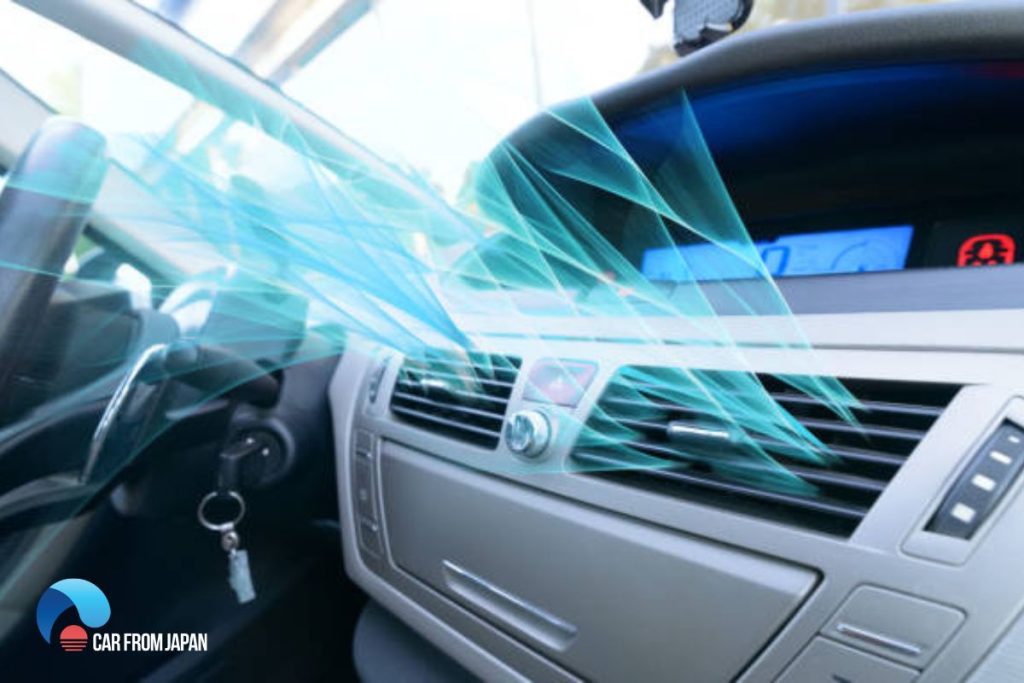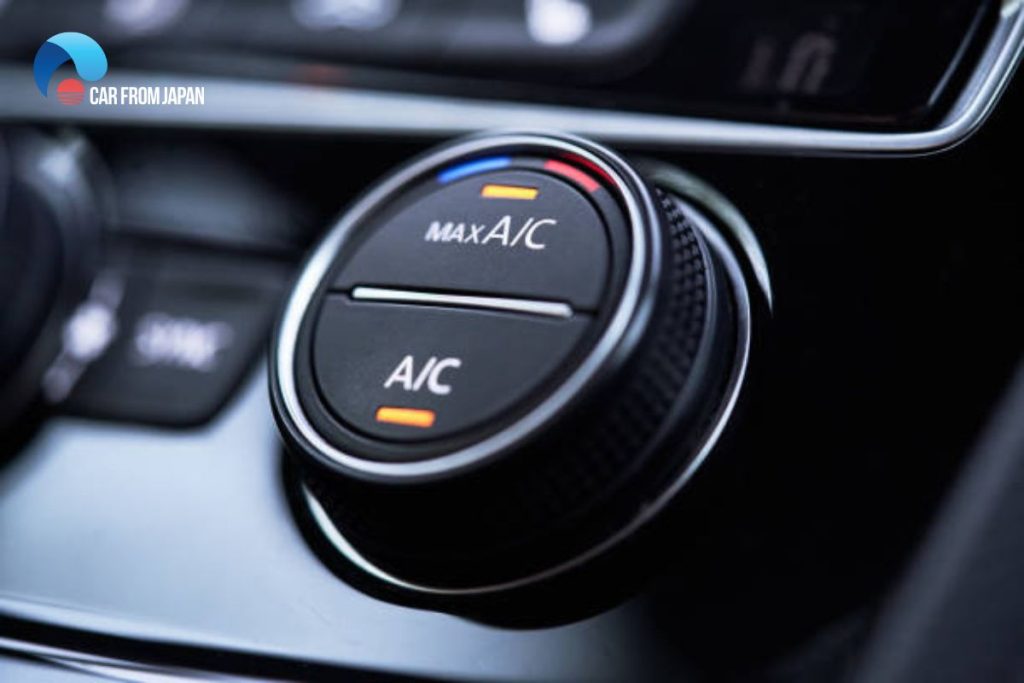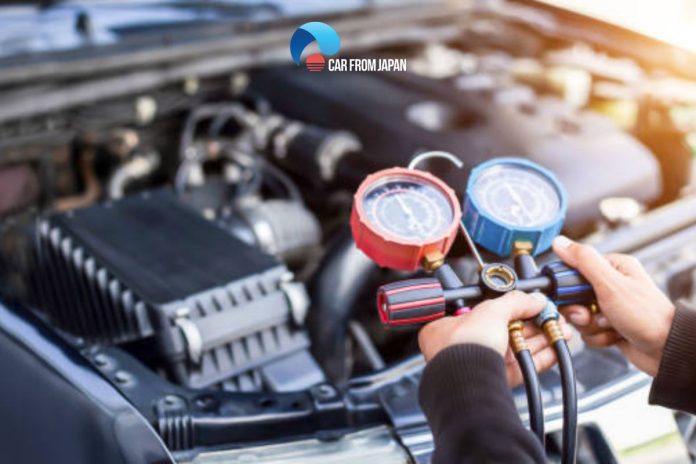Is your car AC blowing warm air instead of refreshing coolness? A vacuum might be the key to getting your system back in tip-top shape. Vacuuming your car’s AC system isn’t just about cleanliness; it’s about ensuring your system runs efficiently and effectively. Wondering how to vacuum car AC system – we’re here to help:
Contents
How To Vacuum Car AC System – A Step-By-Step Process
When you fail to vacuum the dust or moisture from within the AC system, it may deteriorate in terms of performance. Never wait for the problem to creep in, instead maintain the cleaning periodically for the AC to keep running.
Let’s get deeper into the DIY process that can help you in implementing the cleaning process without much expenditure.
1. What you’ll need
- AC Manifold gauge set: This essential tool measures system pressure and allows you to connect the vacuum pump.
- Vacuum pump:This powerful device removes air and moisture from the AC system.
- Refrigerant hoses: These hoses connect the vacuum pump and manifold gauge set to the AC service ports.
- AC service port caps:These caps protect the service ports when not in use.
- Safety glasses: Always protect your eyes when working with pressurized systems.
- Gloves: Wear gloves to protect your hands from refrigerant and other fluids.
2. Identifying service ports
To begin with, park your car in a garage or anywhere, where the surface is flat. Do not start the car or the AC system within.
The high-service port is larger than the lower counterpart. It is positioned amid the orifice tube and the expansion valve and the condenser.
When you follow the AC’s compressor linkages to the bottom of the car, a nozzle would be visible.
This very nozzle is the low-side service port that is stuck amid the compressor and the evaporator.
Now the real work to vacuum the AC system car can start.
3. Hooking up the manifold gauge

Once the identification of the ports is done, you need to hook up the manifold gauge. These sets of gauges facilitate the linkage between the AC system and the low/high-pressure ports.
Firstly, connect the vacuum pump’s hose to the low-pressure port present on the manifold gauge. This is the port that lies between the two gauges present on the gauge set.
Next, you need to connect the red-colored valve to the high-pressure port and the blue-colored valve to the lower one. It is the yellow valve that signifies the connection to the vacuum pump.
One thing straight, remember to keep the valves in the closed position before connecting to the AC system.
4. Making the connections
So now, let’s move on to learn how to pull vacuum on car AC and how much vacuum to pull on auto ac system.
Get a hold on the right pressure port, and connect it to the gauge by merely lifting the connector ring in an upward direction and then pushing it in a downward direction.
Next, you need to turn the red valve in the clockwise direction to activate the service valve, located beneath. Repeat the underlying step for the low port as well.
Once all the connections are secure and tight, it becomes essential to taunt the small valve which, in turn, activates the internal plunger.
This plunger facilitates the actuation of the port valve to refrigerant lines. When concerned as to how to vacuum AC system without pump, one should know that it is possible but would not be that efficient.

5. The vacuuming action
Make sure the readings on both gauges are “zero.” Move on with connecting the other end of the yellow hose on the gauge to the vacuum pump.
Now, turn the pump to the “ON” position. Vacuum pressure should be tracked and should reflect up to 27 Hg or aptly 29 inches.
When concerned as to how long to vacuum AC system, you should know that it would take around 30-45 minutes. This is enough time to get rid of moisture and dust inside the AC system.
For effective vacuuming, open the low port’s valve of the gauge. Once, the tenure of vacuuming has ended; close the low-pressure valve and now you may switch off the pump.
The gauge should be reading pressure around 27-29 inches. If the reading goes hay wired, there is a potential vacuum leak. Contrarily, if everything is fine, you can detach the vacuum pump car AC and place the hose in a refrigerant.
Start your car, turn the AC on, and open the low-pressure valve that is present on the gauge in a slow manner. This step is undertaken to ensure a constant flow of refrigerant into the AC.
Put the caps and the hood back on. And, you are done! You could also go through maintenance tips for the procedure for discharging AC at home.
How Long To Vacuum Car AC System?
So as many people wonder how long to vacuum AC system, the answer is 10-45 minutes.
When it comes to the time to vacuum the AC system, you should know that usually, it would take around 30-45 minutes if there is no leak in the pump. This is enough time to get rid of moisture and dust inside the AC system.
A vacuum of about 500 microns or 29.92 hg gauge pressure is needed for removing any moisture that may have entered the system along with the non-condensable gasses while it was open.
Pulling a deep vacuum should be combined with the replacement of the AC receiver/drier or accumulator that will help to keep moisture inside the system under control.
Some people leave the vacuum for less than 30 minutes, some leave more than 30 minutes. Some even leave for 10 minutes only. There is a process that you can follow to optimize your time with the vacuum.
First, pull the system down into a vacuum, shut off the valves on the gauges, and shut the vacuum pump off. Check to see if you have less than 1″ of vacuum in 10 minutes.
If you do, you have not wasted 1/2 hour vacuuming down the system, just to tear it apart to fix a leak. If it passes the leak test, then vacuum down the system for 20-30 minutes and charge the system.
FAQs
What happens if you don’t vacuum AC?
Skipping the vacuuming step when servicing your car’s AC system can lead to several problems. Air and moisture trapped inside can hinder refrigerant flow, reducing cooling efficiency and potentially causing damage to components over time. This can result in warm air, increased wear and tear on the system, and even costly repairs down the road.
How often should I vacuum my car AC system?
It’s generally recommended to vacuum your AC system whenever you recharge it with refrigerant. This could be annually or as needed depending on usage and system performance.
Can you charge an AC system without vacuum?
It’s strongly discouraged to charge an AC system without vacuuming it first. Before you can recharge your car’s AC system with fresh refrigerant, it’s crucial to create a clean and optimal environment for it to work effectively. This involves using a vacuum pump to remove all existing refrigerant, along with any trapped air and moisture. Think of it as hitting the “reset” button for your AC system, ensuring a fresh start for the new refrigerant and maximizing its cooling performance.
Do you have to vacuum car AC lines?
The lines themselves can trap air and moisture, which will hinder refrigerant flow and reduce cooling efficiency if not removed. Vacuuming ensures the entire system, including the lines, is free of contaminants for optimal performance.
Wrapping Up
Looking at the step-by-step procedure to vacuum the AC and knowing how long to vacuum AC system, you would be all set to do it on your own. Remember to follow the instructions and feel proud when you effectively fix the vacuum system.
Knowing how to do it will save you time and money by taking it to the expensive mechanic, meanwhile, you can do it by yourself.



